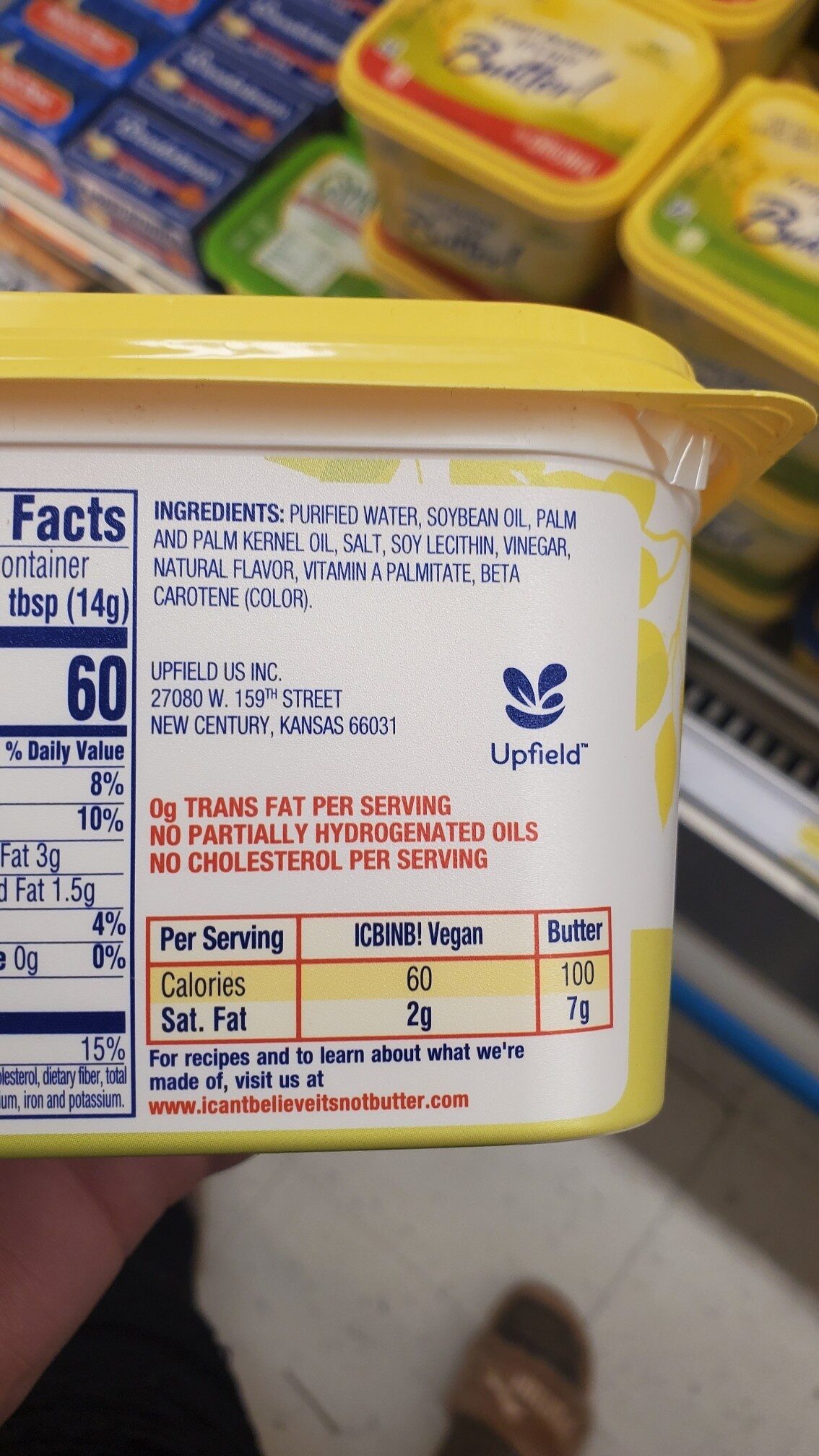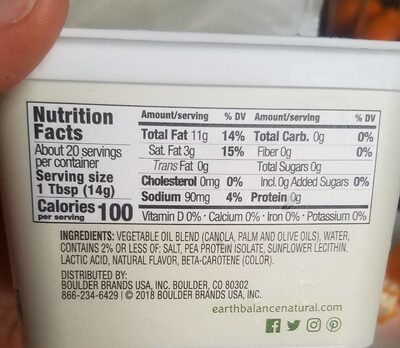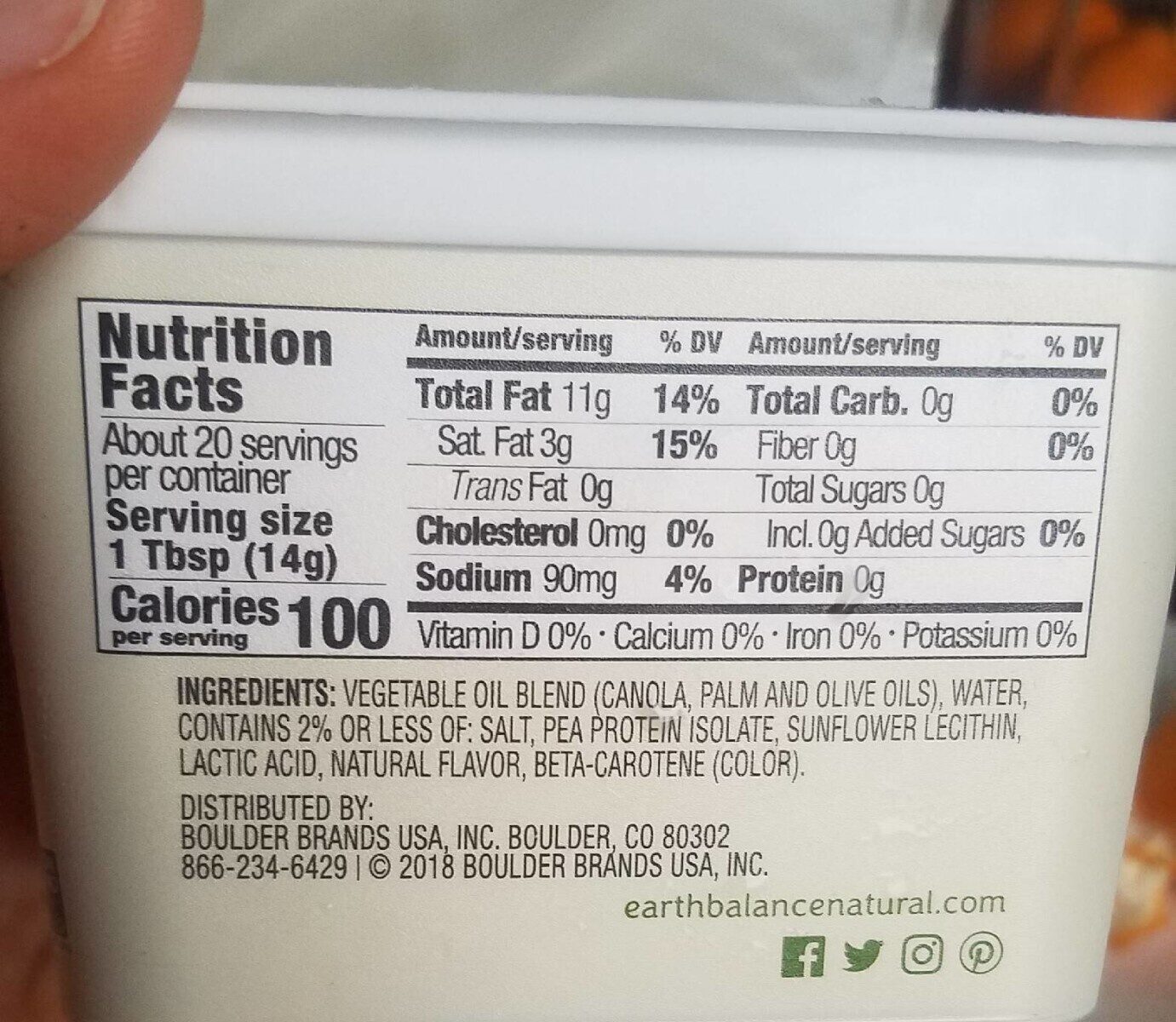45% Vegetable Oil Spread, It'S Vegan - i can't believe it's not butter
This product page is not complete. You can help to complete it by editing it and adding more data from the photos we have, or by taking more photos using the app for Android or iPhone/iPad. Thank you!
×
Barra-kodea: 0040600721394 (EAN / EAN-13) 040600721394 (UPC / UPC-A)
Markak: i can't believe it's not butter
Brand owner: Lipton
Kategoriak: en:Plant-based foods and beverages, en:Plant-based foods, en:Fats, en:Spreads, en:Plant-based spreads, en:Salted spreads, en:Spreadable fats, en:Vegetable fats, en:Margarines
Etiketak, ziurtagiriak, sariak:
en:No gluten, en:Vegetarian, en:Vegan, en:No cholesterol, Vegan Action
Saltzen diren herrialdeak: Espainia, Ameriketako Estatu Batuak
Matching with your preferences
Ingurumena
Carbon footprint
Ontziratzea
Transportation
Threatened species
Report a problem
Datuen iturria
Product added on by elcoco
Last edit of product page on by roboto-app.
Produktuaren orria -gatik editatua elcoco.0dc6dac2388689e33bfbfb3fda7dfd67, inf, itsjustruby, kiliweb, musarana, openfoodfacts-contributors, org-database-usda, thaialagata, yuka.VFlFbEFaVW9tK1k0d1BBZzdnUDArdklxd0tHSVdtTG5GdE1ESVE9PQ, yuka.sY2b0xO6T85zoF3NwEKvlmdWWuXxiT7LGSbUxXfQ1OyPL4HPO_58z5P4Hao, yuka.sY2b0xO6T85zoF3NwEKvlmdpY9TggQzjNwXmv0SC6o6uJLrvethD-tShEKs.










